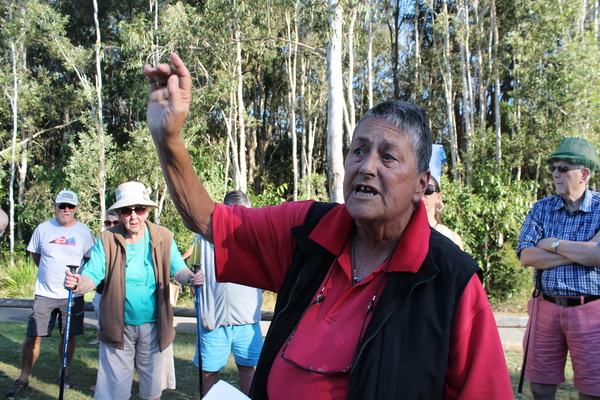MORE than 60 frustrated residents gathered at Wallace Park on Thursday 26 May to demand that Noosa Council cull the growing flying fox colony.
Event organiser and long-time advocate for the removal of the Wallace Park flying fox colony Kay Fielden said residents were angry about Noosa Council’s lack of action.
“Noosa Council has permitted the bats to populate, propagate and copulate without caution or hindrance to the extent they are now in Wallace Park in plague proportions and rapidly spreading throughout Noosa, such as in Hasting Street, Pinaroo Park and Gympie Terrace, right in the middle of popular tourist attractions,” she said.
Ms Fielden labelled the meeting an “outstanding success” with a majority of residents voting in favour of her suggestions that include urging Noosa Council to negotiate a cull of the protected species.
“This has been done before on 7 September 2012 when the Queensland Government reintroduced shooting as a means of bat control after requests from farmers,” she said.
Ms Fielden also called on residents to lay a complaint against the council with the Local Councils Commission, a three-person board that former Noosa Mayor Noel Playford was recently appointed to.
Ms Fielden said she would call for Mr Playford to stand down as he is part of the complaint that would be based on an alleged “failure to do anything” despite residents’ requests.
The complaint would also include accusations of a lack of duty of care, negligence by permitting bat numbers to grow, sleep deprivation and public health risks such as leptospirosis.
“Some of these diseases have already been found on bats in the area but our complaint also includes Noosa Council permitting dead bats to just rot on the ground and not caring about ratepayers’ concerns or needs, merely coming up with solutions such as residents installing double glazed windows and doors, and telling lies about the numbers of complaints received by council,” she said.
Ms Fielden said if the complaint is successful or there is a long delay in the process, the residents will begin a class action against the council that would seek individual damages due to the “bat invasion”.
The residents also agreed to discuss dispersion techniques with the council and call for fir and gum trees to be planted throughout Wallace and Pinaroo Park as well as the installation of solar-powered sensor lights and sprinkler systems.
Ingrid Jackson was the only councillor to attend the meeting but was unable to share her comments as the angry crowd often drowned her out.
Ms Fielden said Cr Jackson tried to voice council views but “unfortunately, the majority of residents felt Noosa Council had already had four-and-a-half years to voice their views and act, but had chosen to do nothing, so Ingrid was not well received”.
After the meeting Cr Jackson denied claims that Noosa Council had been inactive and that a management plan, based on expert advice from consultants, has been in place to “alleviate the problem”.
“Under the plan, trees have been pruned and others removed to form a buffer zone.
“In addition, a tree canopy sprinkler system is being installed to discourage flying foxes from roosting too close to residents’ homes,” she said.
“The council also keeps in touch with research into this problem and activities in other areas to separate flying fox colonies from residential and agricultural areas.
“Shooting the flying foxes, proposed by a few residents, is only permitted by law in threatened agricultural properties and is an option not available to us.
“Culling is usually done using firearms and is only permitted in fields and orchards where flying foxes are feeding, never at their base camp roosts,” she said.
“There is no doubt gunfire may encourage dispersal but the colonies are prone to later return or relocate to nearby sites.
“Of course, residents can opt to approach State and Federal authorities about this matter.”
Ms Fielden said there will be more meetings to see if “our resolutions are implemented and what further action is required”.
Get the latest news to your email inbox FREE!
REGISTER






